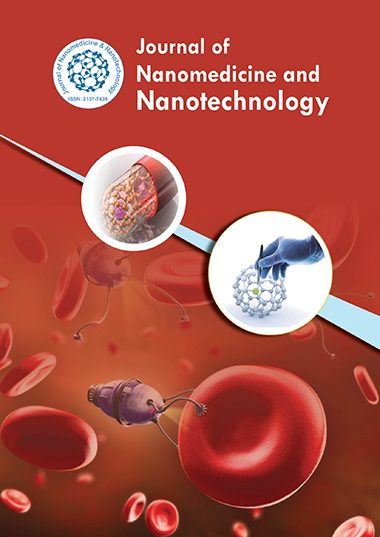Indexed In
- Open J Gate
- Genamics JournalSeek
- Academic Keys
- JournalTOCs
- ResearchBible
- China National Knowledge Infrastructure (CNKI)
- Scimago
- Ulrich's Periodicals Directory
- Electronic Journals Library
- RefSeek
- Hamdard University
- EBSCO A-Z
- OCLC- WorldCat
- SWB online catalog
- Virtual Library of Biology (vifabio)
- Publons
- MIAR
- Scientific Indexing Services (SIS)
- Euro Pub
- Google Scholar
Useful Links
Share This Page
Journal Flyer

Open Access Journals
- Agri and Aquaculture
- Biochemistry
- Bioinformatics & Systems Biology
- Business & Management
- Chemistry
- Clinical Sciences
- Engineering
- Food & Nutrition
- General Science
- Genetics & Molecular Biology
- Immunology & Microbiology
- Medical Sciences
- Neuroscience & Psychology
- Nursing & Health Care
- Pharmaceutical Sciences
Design of nano-hydrogels for skin cancer using computational chemistry
15th World Medical Nanotechnology Congress
October 18-19, 2017 Osaka, Japan
Norma-Aurea Rangel-Vazquez, Dulce N Villanueva-Garcia and Maria-Elena Picazo-Smith
Instituto Tecnologico de Aguascalientes, Mexico
Entrust Datacard, USA
Posters & Accepted Abstracts: J Nanomed Nanotechnol
Abstract:
Currently, skin cancer is the most common cancer in the United States because of the long exposure times to ultraviolet (UV) radiation. Approximately, 5.4 million basal cell and squamous cell skin cancers are diagnosed each year. Treatment for skin cancer depends mainly on the type and degree of disease progression. There are some standard treatments while others are specific to the disease. In the new treatments of skin cancer is the application of topical treatments based on polymers, whether natural, synthetic biodegradable or non-biodegradable. Due to their good interaction with living tissues, hydrogels based in chitosan nanoparticles are very suitable materials for medical applications. As well as they show to be inert materials, characteristic by which the cells and proteins do not tend to be united to its surface. On the other hand, its property of swelling in liquid mediums allows, to absorb, to retain and to release some organic solutions under controlled conditions. In this project, we use 5-Fluurouracil (5-Fu) as it is the most common drug used in the topical treatment of actinic keratoses and cancers of basal cells and squamous cells. In charge of removing the cancerous cells close to the surface of the skin, it does not reach the deepest cancer cells. It is therefore, used only in precancerous conditions or superficial cancers. Otherwise, Computational chemistry belongs to research atoms, molecules and macromolecules by means mathematics models for simulation the several interactions between atoms of different substances. The analyzes were determined using AMBER/PM3 hybrid models with the purpose of obtaining the thermodynamic stability in addition to the adsorption mechanism of the drug in the nano-hydrogel using the electronic distribution of the electrostatic maps as well as the QSAR properties to predict the biological behavior.


